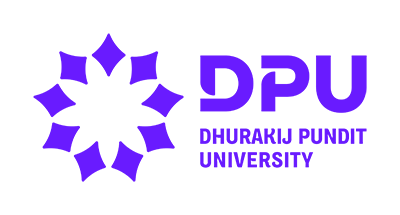ความรู้เท่าทันการสื่อสารยุคดิจิทัลกับบทบาทในการกำหนดแนวทางการปฏิรูปการสื่อสารในสังคมไทย
.png)
บทคัดย่อ
การวิจัยเรื่อง “ความรู้เท่าทันการสื่อสารยุคดิจิทัลกับบทบาทในการกำหนดแนวทางการปฏิรูปการสื่อสารในสังคมไทย” เป็นการวิจัยเชิงสำรวจ กลุ่มเป้าหมายประชากรกรุงเทพมหานครที่มีอายุ 18 ปีขึ้นไป จำนวน 400 คน ผนวกกับการจัดกลุ่มอภิปรายโดยเชิญผู้ทรงคุณวุฒิผู้เชี่ยวชาญด้านสื่อและการรู้เท่าทันสื่อและการสื่อสารมาร่วมให้ความคิดเห็นเพื่อประมวลองค์ความรู้ แนวคิดและการดำเนินการเรื่องการรู้เท่าทันการสื่อสาร
การวิจัยครั้งนี้มีวัตถุประสงค์หลัก 3 ด้านคือ (1) เพื่อการประมวลแนวคิด องค์ความรู้และการดำเนินการเรื่องการรู้เท่าทันสื่อและการสื่อสารในประเทศไทย จากผู้ทรงคุณวุฒิ (2) สำรวจลักษณะทางประชากรศาสตร์ พฤติกรรมการเปิดรับและการใช้สื่อ ระดับการรู้เท่าทันการสื่อสารของกลุ่มตัวอย่างและ (3) ศึกษาแนวทางในการส่งเสริมบทบาทความเป็นพลเมืองและการขับเคลื่อนการรู้เท่าทันการสื่อสารเพื่อการปฏิรูปการสื่อสารในสังคมไทย
ผู้ทรงคุณวุฒิในการอภิปรายกลุ่มได้ให้ข้อมูลเกี่ยวกับการศึกษาวิจัยและการขับเคลื่อนเพื่อการส่งเสริมการเรียนรู้ การรู้เท่าทันสื่อและการสื่อสารในระดับต่างๆ ทั้งการจัดหลักสูตรการเรียนการสอนในโรงเรียนและการรณรงค์ในกลุ่มเป้าหมายต่างๆ ผู้ทรงคุณวุฒิชี้ประเด็นปัญหาการนิยามขอบเขตการรู้เท่าทันสื่อและการสื่อสารที่ยังแตกต่างกัน รวมทั้งการสร้างตัวชี้วัด และการวินิจฉัยการเป็นผู้รู้เท่าทันหรือไม่รู้เท่าทันที่ยังไม่สอดคล้องกัน ซึ่งผู้ศึกษาวิจัยควรจะต้องกำหนดขอบเขตแนวคิดให้เจาะจงเป็นแบบแผนชัดเจน
ในการสำรวจประชากรพบว่าเป็นเพศหญิงมากกว่าชาย อายุกระจายทุกวัย การศึกษาส่วนใหญ่ปริญญาตรี อาชีพกระจายทุกประเภท แต่ส่วนใหญ่เป็นนักศึกษา มีทั้งกลุ่มทำงานและไม่ทำงานในสัดส่วนใกล้เคียงกัน ระดับรายได้ค่อนข้างต่ำอยู่ในกลุ่ม 1 – 2 หมื่นบาทมากที่สุด
ประชากรร้อยละ 96.19 หรือเกือบทั้งหมดมีสมาร์ทโฟนใช้เป็นของตนเองรวมทั้งมีคอมพิวเตอร์ตั้งโต๊ะและโน้ตบุ๊กมากกว่าครึ่งหนึ่ง มีพฤติกรรมเปิดรับสื่อเว็บไซต์ค่อนข้างบ่อย รวมทั้งเปิดรับสื่อสังคมออนไลน์โดยใช้ไลน์มากที่สุดบ่อยถึงบ่อยมาก เฟซบุ๊กรองลงมาตามด้วย ยูทูป กูเกิล อินสตาแกรม
สำหรับสื่อดั้งเดิมเปิดรับโทรทัศน์เกือบทุกวันจนถึงทุกวัน รองลงมาอ่านหนังสือพิมพ์ ฟังวิทยุและติดตามนิตยสารบ่อยปานกลาง ส่วนใหญ่มีวัตถุประสงค์ในการใช้ทั้งสื่อดั้งเดิมและสื่อใหม่ เพื่อติดตามเหตุการณ์ข่าวสารต่างๆ และเพื่อความบันเทิงผ่อนคลาย สำหรับสื่อใหม่ใช้เพื่อการสื่อสารพูดคุยกับบุคคลต่างๆ อยู่ในเกณฑ์บ่อย
ระดับการรู้เท่าทันการสื่อสาร ส่วนใหญ่อยู่ในกลุ่มระดับปานกลาง ร้อยละ 54.5 รองลงมาเป็นกลุ่มระดับต่ำ ร้อยละ 30.75 และกลุ่มระดับสูงเพียงร้อยละ 14.75
ประชากรมีบทบาทในการตรวจสอบสังคมน้อย และคาดหวังให้สื่อมีบทบาทตรวจสอบสังคมและสร้างสรรค์สติปัญญาแก่ประชาชนมากขึ้น กลุ่มตัวอย่างต้องการให้ภาครัฐส่งเสริมการรู้เท่าทันการสื่อสารเพื่อปฏิรูปการสื่อสารและปฏิรูปสังคม ต้องการให้มีการเรียนการสอนและจัดหลักสูตรการรู้เทาทันการสื่อสารในโรงเรียนและมหาวิทยาลัย โดยเฉพาะในระดับตั้งแต่มัธยมศึกษาถึงอุดมศึกษา นอกจากนี้ยังต้องการให้รัฐบาลมีนโยบายจัดสรรงบประมาณ โดยแบ่งมาจากรายได้ภาษีของธุรกิจที่เกี่ยวกับการสื่อสารโดยเฉพาะจาก กสทช. มาเป็นกองทุนเพื่อส่งเสริมการรู้ทันการสื่อสารให้กับหน่วยงานและองค์กรต่างๆ ที่เกี่ยวข้องและมีบทบาทในการผลักดันการรู้เท่าทันการสื่อสารในสังคม
ผลการทดสอบสมมติฐานที่ตั้งไว้ว่าระดับการรู้เท่าทันการสื่อสารแตกต่างกันไปตามลักษณะทางประชากรและพฤติกรรมการเปิดรับและการใช้สื่อ ปรากฎว่าเป็นตามสมมติฐานเพียงบางส่วนนั่นคือแตกต่างกันตามลักษณะทางประชากรศาสตร์ เฉพาะด้านอายุที่กลุ่มผู้สูงอายุมากกว่ามักมีระดับการรู้เท่าทันมากกว่า แต่ก็ไม่เป็นแบบแผนที่สอดคล้องกันทุกกลุ่ม ส่วนสมมติฐานที่เกี่ยวกับพฤติกรรมการสื่อสารปรากฏว่ามีความแตกต่างกับระดับการรู้เท่าทันการสื่อสาร บางส่วนแต่ก็ไม่เป็นในทิศทางที่สอดคล้องกัน จึงไม่สามารถสรุปเป็นแบบแผนที่ชัดเจนได้
Abstract
This research combined a survey approach and a group discussion approach as a methodology. The subjects of the survey study included 400 residents of Bangkok aged 18 and above. Meanwhile, professionals and experts on media and communication literacy were invited for a group discussion to exchange and compile knowledge, ideas, and examples of actions taken in regard to communication literacy.
Three main purposes of the research are (1) to collect and compile knowledge, ideas, and examples of actions taken about media and communication literacy in Thailand from professionals, (2) to explore demographic characteristics, exposure and use of media, and communication literacy level of the subjects, and (3) to seek a guideline for promoting citizenship roles and boosting communication literacy for communication reform in Thai society.
In the group discussion, professional participants gave information about existing researches and activities to encourage media and communication literacy education in various levels, which included providing courses in schools and campaigning those literacy among different target groups. The professionals also mentioned a problem of differences in the definition of the scope of media and communication literacy and inconsistency of indicators and diagnosis of the people’s literacy and illiteracy and suggested that researchers make a systematic and clear conceptual framework in doing such studies.
The subjects of the survey were comprised more of females than males. There were subjects from every range of age and every type of occupation. Majority of the subjects had a Bachelor’s degree and most of them were students. The proportion of subjects that were employed and unemployed was similar and most of the subjects were ranked in a group of a rather low income level of 10,000-20,000 baht.
Approximately 96.19 percent or majority of the subjects had smartphones and more than half of them also had desktop computers or laptops. The subjects were occasionally exposed to websites and social media. LINE was the most popular social network application among the subjects, with frequently and very frequently used levels, followed by Facebook, YouTube, Google, and Instagram.
In terms of traditional media, the subjects were exposed to television almost every day to every day and newspaper, radio, and magazine at a moderate amount. Majority of them used both traditional media and new media to follow events and news and seek entertainment, while they used new media for communicating with other people at a frequent level.
Majority of the subjects or 54.5 percent had moderate communication literacy, followed by 30.75 percent of low communication literacy. Only 14.75 percent of the subjects had a high level of communication literacy.
The subjects had low engagement in social investigation and expected the media to play a greater role in investigating the society and fostering intelligence among the people. The subjects also required that the government sector promote communication literacy for communication and social reform and demanded communication literacy teaching or courses in schools and universities, especially for secondary education and higher education. In addition, the subjects wanted the government to allocate budget, which was appropriated from tax revenues that were collected from communication related businesses, especially from the NBTC, to establish a fund for developing communication literacy among agencies and organizations that play a part in pushing forward communication literacy in the society.
Based on a hypothesis that a level of communication literacy was varied among different demographic factors of people and their different behaviors of media exposure and use, the test results showed that the hypothesis on demographic differences was true only in the age factor; while the older subjects had a higher level of literacy, this pattern of relationship did not apply to other demographic characteristics of the subjects. Regarding communication behaviors, the test results showed that the level of communication literacy did not relate to the subjects’ behaviors of media use and communication, so a pattern could not be drawn.
นักวิจัย :
รศ.ดร.พีระ จิรโสภณ ,และคณะ
สังกัด :
คณะนิเทศศาสตร์
คำสำคัญของโครงการ
:
ความรู้เท่าทันการสื่อสาร, ยุคดิจิทัล บทบาทในการกำหนดแนวทางการปฏิรูปการสื่อสาร,การปฏิรูปสื่อ
ปีที่เสร็จ : 2559
